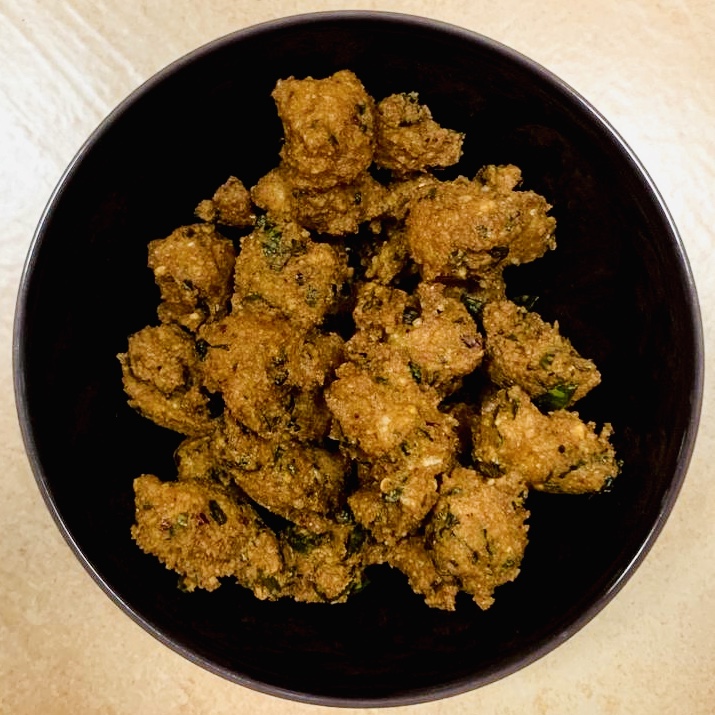
KuNukku – A teatime treat
KuNukku is a very traditional South Indian teatime snack, typically made in Tamilian households. I remember wolfing down my grandmother’s KuNukkus frequently as a child. I have never seen this being served at any restaurant and have only ever eaten this at home. It’s best served at teatime, especially during monsoon and winter months. Pair this with a cup of masala chai and you’ve got yourself a little bit of heaven!
Ingredients
Idli rice – 1 cup (*Note 1)
Raw rice – slightly less than ¼ cup (*Note 2)
Yellow split chana dhal – ¾ cup
Toor dhal – ¾ cup
Urad dhal – slightly less than ¾ cup
Dry red chillies – 4 or 5
Green chillies – 2 (or to taste)
Salt – to taste
Asafoetida (Hing) – ½ teaspoon (*Note 3)
Fresh coconut
– grated – 1 ¼ cup
– pieces (optional) – ½ cup (*Note 4)
Onion (optional) – 1 cup finely chopped
Curry leaves – a handful finely chopped
Coriander leaves – a handful finely chopped
Oil – to deep fry (*Note 5)
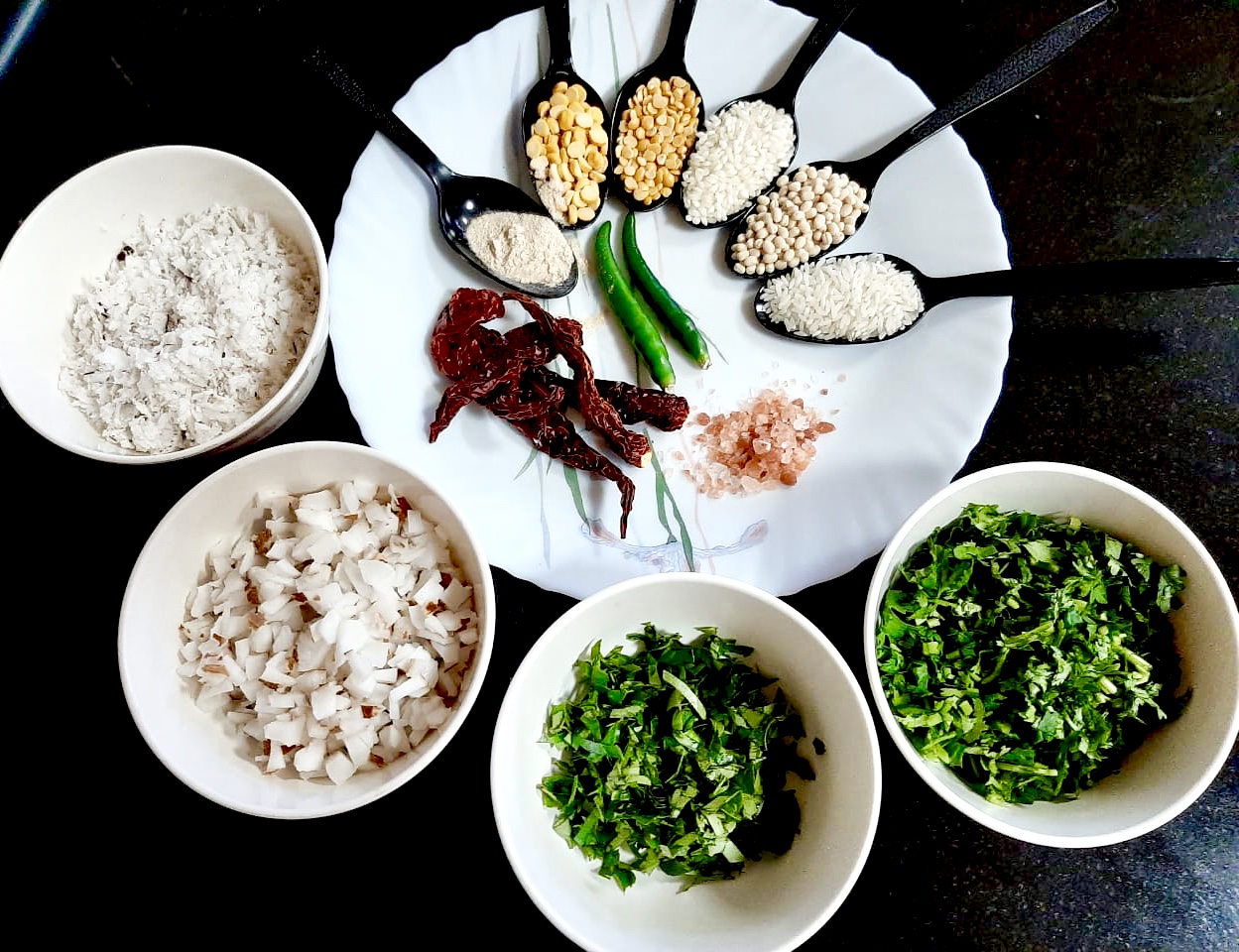
Yield
~ 60 pieces
(serving size 5-10 pieces)
Prep time
2-3 hrs
(to soak rice & dhal)
Cook time
1 hr
(grinding 15 mins + frying 45 mins)
Method
1) Soak the rice and dhal together in water for 2 to 3 hours.
2) Drain and grind the rice and dhal coarsely with salt, green chillies, red chillies, asafoetida and grated coconut. Add just a little bit of water to get the right consistency.
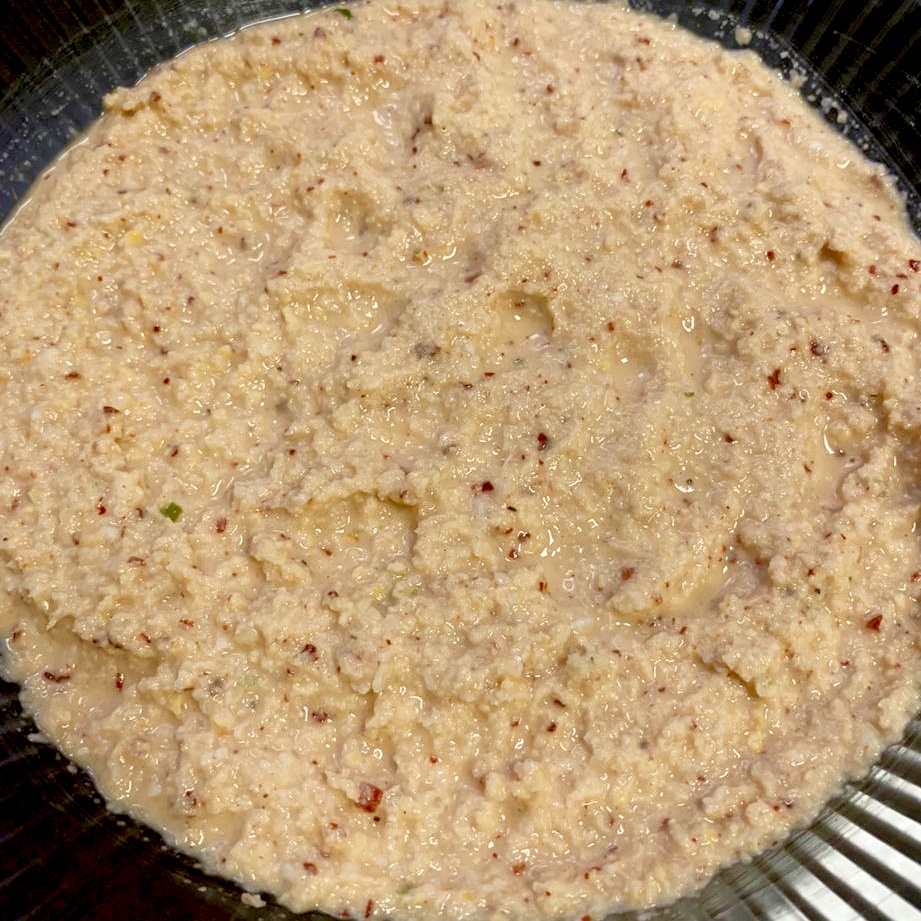
3) To this batter add the coconut pieces (optional), onion (optional), curry leaves and coriander leaves. Mix thoroughly.
4) Heat the oil in a deep pan on medium flame. Check if it is hot enough to deep fry the KuNukku by dropping just a pinch of the batter into the oil. It should pop up to the surface slowly after it is dropped. This is the right temperature for frying.
5) Make small balls from the batter with your hand and drop it into the hot oil. The heat should constantly be at medium. (If you’re new to deep frying, check out the Beginner’s tips below!)
6) Fry until it becomes crisp and golden.
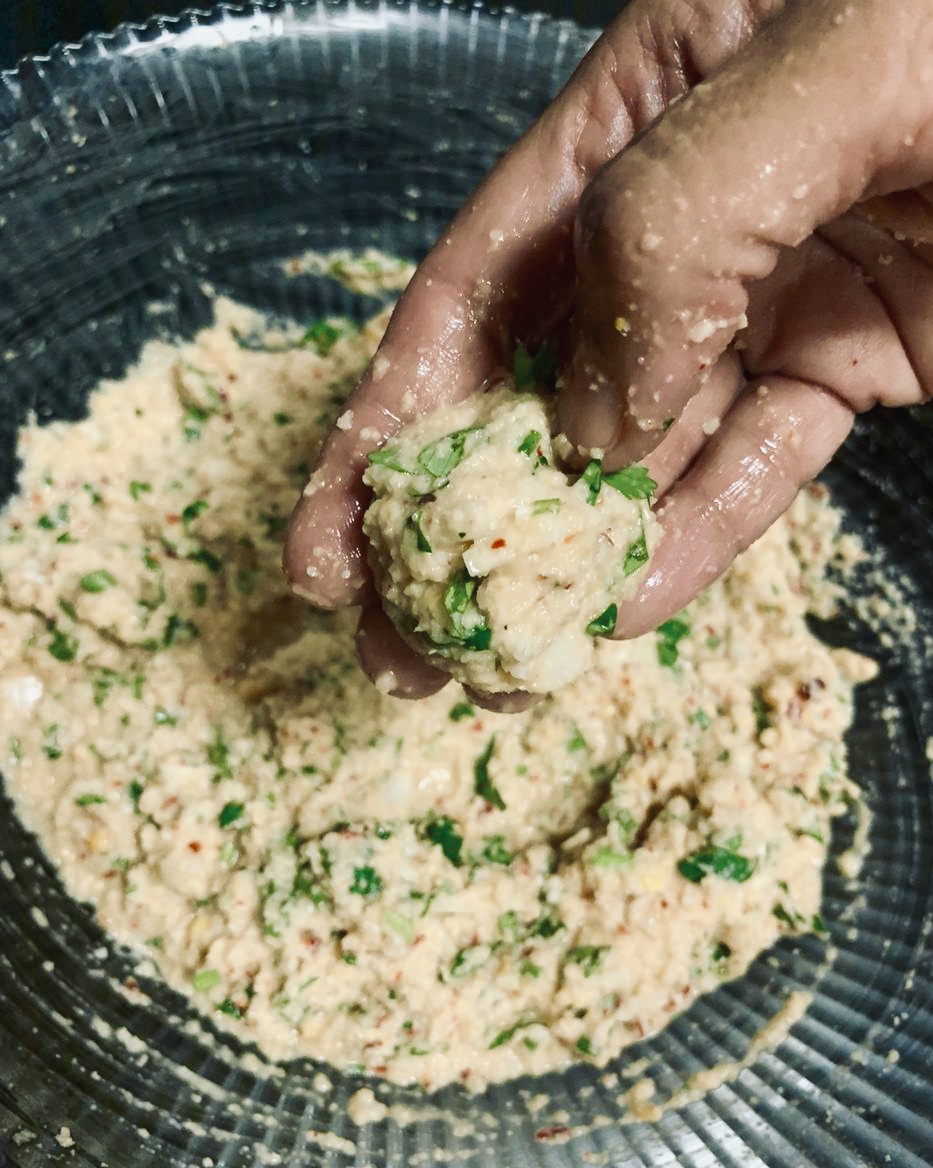
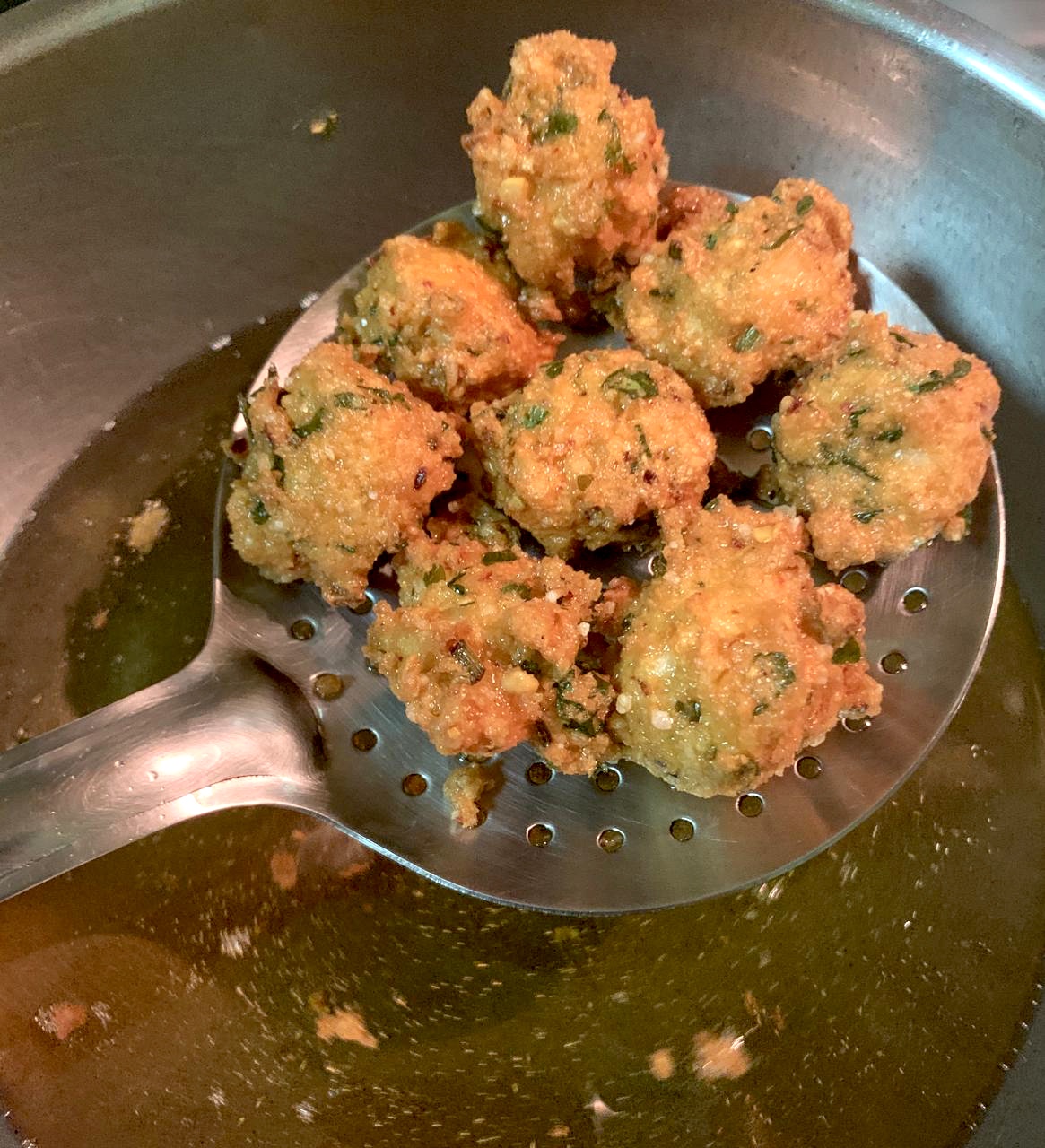
7) Drain any excess oil by laying them on an absorbent kitchen paper towel.
8) KuNukku is usually served without any sauce or chutney as it has all the spices and flavours in itself. However, if you’re feeling inspired, go ahead and serve with a coconut or tomato chutney!
Notes
- Idli rice is nothing but a short grained variety of par boiled rice.
- Only use short grained raw rice. No Basmati or Jasmine!
- Asafoetida (Hing) is the latex extracted from several species of the Ferula herb. It is dried and the powder is used in cooking to deliver a flavour reminiscent of onion. Asafoetida is not only a flavour enhancer, but also a digestive aid. This recipe contains a lot of dhals/pulses. Asafoetida is therefore added to help in digestion of this high protein fried snack. South Indian food contains this ingredient often for this reason.
- Adding the grated coconut while grinding the batter helps to enhance the texture of KuNukku. Although coconut pieces are optional, I like to add them because they lend a lovely crunch to the final product.
- Any neutral smelling oil can be used. I generally use refined groundnut (peanut) oil for all my deep frying.
Beginner’s tips
- If you are new to cooking, and not very comfortable bringing your hand too close to hot oil to drop the batter, then you can use a spoon instead.
- Deep frying is tricky business. The oil should be in medium heat throughout the frying process to get golden KuNukku.
– If the oil is not hot enough, the batter will not separate in the oil properly and the whole thing will become one big lump. It will also cause the final product to absorb a lot of oil and you’ll be left with a big oily lump.
– If the oil is too hot, the KuNukku will darken very quickly but will be undercooked on the inside.


You May Also Like
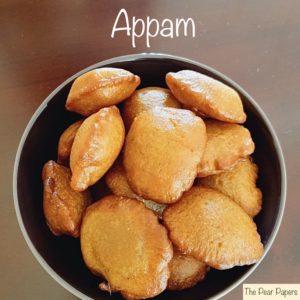
Appam
August 28, 2021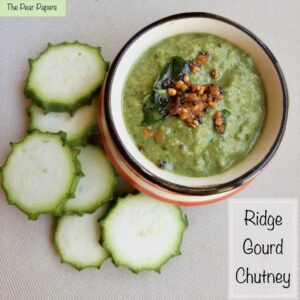
Ridge Gourd Chutney
February 3, 2024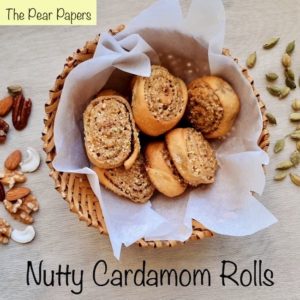
One Comment
MotherOfNOMS
Hi Keya,
Happy to know you went through the website and thank you so much for your heartfelt appreciation:) Motivates me to share many more interesting recipes. Let me know your feedback after trying out the recipes.
Thanks again.